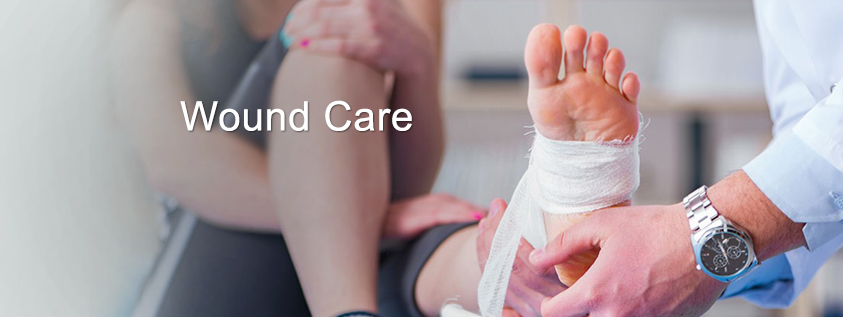STAY UPDATED

In laymen language, wound is known as ulcer/Ghaw. Wounds are due to breach in the continuity of the skin or loss of skin and other tissues. Wounds can be of various sizes, may be painless or painful, they can be dry or have some kind of discharge (watery, blood, pus) can occur on any part of the body. They can be of various depth, as skin deep, fat deep, muscle deep or bone deep. There are various structures underneath the skin like nerves (provide sensation and power in the body), blood vessels (provide blood to the tissues), tendons (which move our joints) and joints.
Wounds disturb our daily routine, Sometimes painful, fowl smelling,spoil our cloth with discharge, difficult to sit or walk so it is important to take care since beginning so that they does not increase in size rather heal faster.
Types of Wounds
- Infective wounds- due to Bacterial, fungal, tubercular etc. common infective wound is Baltod
- Post Injury wound-
Home accidents: due to knife, glass cut injury, door trap, falls on the floor/washroom.
Road traffic accidents: Accidents causes simple scratch to very complicated, life threatening wounds.
Fights- Usually wounds on face and hands.
Agricultural accidents- They are due to thrasher machine/ chara cutting machine. Usually hand and face is involved.
Industrial accidents- usually hands are involved. - Wounds due to burn: Flame burn, hot liquid burn, electric burn, chemical burn. Electric burn and acid burns are more severe and complicated.
- Post operative wounds: Wound gapping after operation, due to removal of skin and other tissues. In operation of abscess, pilonigal sinus, fissure, fistula, infected cyst etc.
- Post Radiotherapy: They develop at the site of radiotherapy and are very difficult to heal even with the best treatment.
- Bed sore Wounds: They develop in bedridden patients. Usually develop at the site of bony prominences, lower back, side of thigh, heel etc.
- Diabetic foot Wounds: They are due to neuropathy and decreased blood supply to the foot. They need early and effective management to prevent amputations of toes and feet.
- Wounds due to cancer: Usually they are painless in the beginning; there are certain cancers which present as ulcers.
Basel cell carcinoma usually develops on the face and on the previous black mole.
Mouth ulcers: tongue/cheeks ulcers are common in Tobacco chewers and chances of ulcer formation are very high. Any long standing ulcer can turn into cancerous ulcer.
Diagnosis of Wound:
Bed sore wounds, diabetic wound, radio necrotic wounds need special attention and treatment. Wounds due to cancer need urgent attention. First need biopsy for diagnosis of type of cancer and then treatment (Surgery/ Radiotherapy/Chemotherapy) according to the type of cancer. Few points must be noted in the diagnosis: Cause of wound, time of wound, mode of injury/ mode of event. Size, shape, time, age, depth, type of discharge and surrounding tissues. Whether any deeper structure like nerve, artery, tendon, muscles, joint etc are injured or not. Cancerous wound and fungal wound have special appearance.
Management of Wound
Any wound in the body should be taken with proper care in terms of diagnosis and its management. Small Wounds like abscess, fissure, fistula and wounds due to any injury etc. they can heal with proper dressing.
Large Wounds: due to burn, injury, infection etc. chances of infection is very high in these wounds. In these wounds, dressing is part of the treatment but they require surgical intervention.
Very extensive wounds: Need surgery and usually need hospitalization.




